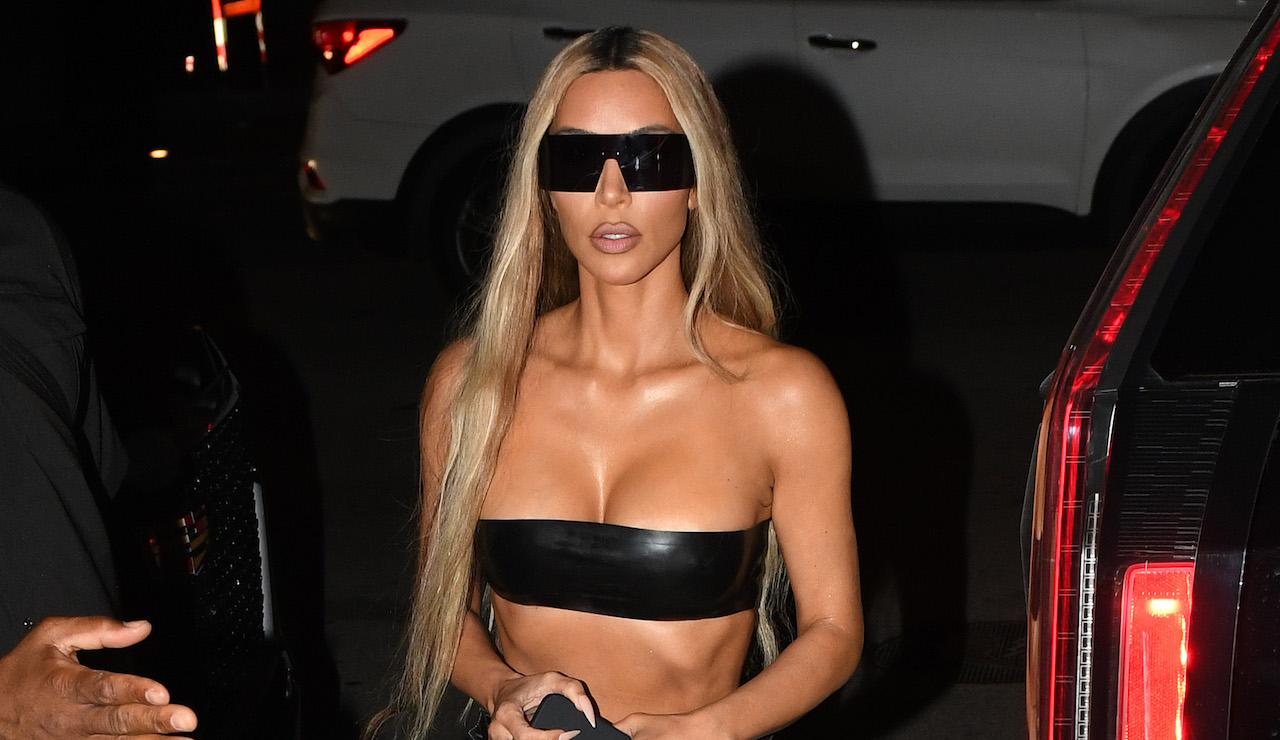
As soon as I saw Kim Kardashian’s take on the British chav makeover trend, I was left with a sour taste in my mouth. It just didn’t sit right with me.
The trend itself popped up quite a few months ago, with young girls (both British and otherwise) lip-syncing to Blackpool-based Millie B’s viral song, “M to the B”, while chewing gum and using makeup to turn themselves into a stereotypical “chav.” The look featured stark brows, pale lips, clumpy mascara, badly blended contour and a foundation shade that’s approximately five shades too dark. This “chavvy” aesthetic was genuinely all the rage when I was at school – all the cool girls had it. I coveted it. It went hand in hand with side-swept fringes, short skirts, cheap hair extensions and boyfriends. To this day, I prefer myself with a nude lip – a preference that’s stuck with me like a lingering side effect of my childhood spent in a British public school for the working class.
Kim Kardashian’s rendition – which she claims was made after losing a bet with daughter North – sees her first appear on camera as her usual glam self. Then she whips her hair up into a messy topknot, turns her brows into slugs, slathers layers (and layers) of orange-hued foundation onto her skin, brightens her under-eyes way too much, aggressively contours, and applies concealer to her lips – all the while ferociously chewing gum and attempting to lip-sync. This is no different to the thousands of other videos on TikTok; #chav boasts 2.5 billion views while #chavchallenge has a cool 17 million – and yet, something feels off.
Me too! The bribes and bet losing I have going on with North is unreal!
— Kim Kardashian (@KimKardashian) January 18, 2023
The word “chav” is a pejorative that refers to the poorer, less-educated, British working class. It’s a word that was used in the mid 2000s to demonise those in poverty, and it’s a classist, derogatory term that we just don’t use anymore in the UK. It’s loaded with sociopolitical meaning and deep-seated connotations. It’s a term that – according to journalist Owen Jones – was previously used by politicians to fuel the idea that working-class struggles are “consequences of personal behaviour, not the social structure of the country.”
There was a peculiar time, when Tony Blair was prime minister, where chavs were portrayed on TV shows like caricatures. But, as Jason Okundaye explained for Tribune, Blair’s “regular attacks on ‘scroungers,’ ‘chavs,’ single mothers, asylum seekers, and hooded youths provided a sheen of respectability to TV executives who made a career out of mocking Britain’s most marginalised.” You’d think we’d have moved on from such blatant parodying and belittling of the lower classes. Yet, the chav’s return to popular culture shows a deep misunderstanding of the word and its origins. This TikTok trend seems to empower the app’s community to treat chavs as a quirky, aesthetically funny group, rather than a persecuted class. Ultimately, the trend keeps stereotypes alive amongst an entirely new demographic.
Now then, as a girl who grew up amongst “chavs” during the mid 2000s, I think it’s one thing to see girls like me engaging in the trend – almost as a throwback to their former selves – and another thing entirely to watch the world’s most privileged human being imitate a class she knows absolutely nothing about. There’s no doubt at all that Kim Kardashian – from her mansion in LA – had no idea of the message she was perpetuating, but that naivety and innocence does not make it okay. When you have a following of over 341 million people on Instagram alone, you have a certain responsibility to educate and inform yourself before sending a message to millions of young and impressionable worshippers. To me, her TikTok came across as completely tone-deaf. She should have known better, but her privilege shielded her from doing so. As TikTok creator Kat Bukowick said: “loads of people taking part in the [chav] trends are either American or so far removed from class politics by the means of their own privilege that they haven’t thought about it.”
Despite this, fans flocked to Twitter and Instagram to confess their adoration for Kim, calling her “the queen of TikTok” or describing the video as hilarious. For me, hilarity doesn’t come into it. The video essentially ridicules working class females, who already have it hard enough when it comes to inequality amongst upper-class or male peers, without being dissected on the way they dress and sound.









